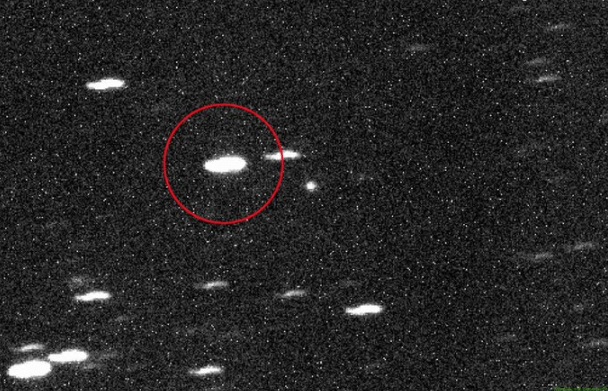A massive interstellar object speeding through our Solar System has stirred intense speculation — and concern — among scientists and skywatchers alike.
An enormous space body, comparable in size to Manhattan, has been detected racing towards the inner Solar System.
While officially labelled as comet 3I/ATLAS (formerly A11pl3Z), a provocative new scientific paper suggests it could be something far more sinister — a covert alien spacecraft with the potential to attack Earth.
This extraordinary theory, though unproven, is causing quite a stir in the scientific community and beyond.
A Rare Visitor from the Stars
Earlier this month, astronomers confirmed the presence of just the third known interstellar object to ever pass through our Solar System. Travelling at a staggering 60 kilometres per second, 3I/ATLAS is believed to originate from a distant star system, adding to the mystery surrounding its sudden appearance.
First spotted on July 1 by the ATLAS survey telescope in Río Hurtado, Chile, the object is estimated to span between 10 and 20 kilometres across — although its reflective, icy surface might make it appear smaller than it really is. But it’s not just the size or speed that’s making headlines.
Unusual Orbit Raises Eyebrows
According to a draft scientific paper published Tuesday, the trajectory of 3I/ATLAS is raising serious questions. Its orbit brings it unusually close to Venus, Mars, and Jupiter — a highly improbable route that scientists say has less than a 0.005% chance of occurring by coincidence.
The authors suggest this path could be deliberately calculated, allowing an intelligent craft to approach Earth unnoticed.
They explain that as the object swings behind the Sun in late November, it will temporarily vanish from Earth’s sight, potentially offering the perfect cover to slow down and remain in our Solar System — quietly preparing for an assault.
A Stark Warning — Or Just Science Fiction?
The paper — yet to be peer-reviewed — is authored by Harvard astrophysicist Avi Loeb, alongside Adam Hibberd and Adam Crowl from the London-based Initiative for Interstellar Studies.
While the idea of an alien invasion may sound like science fiction, the team insists the exercise is purely theoretical.
“This paper is contingent on a remarkable but, as we shall show, testable hypothesis, to which the authors do not necessarily ascribe, yet is certainly worthy of an analysis and a report,” the authors wrote.
They add, with a hint of gravity: “The consequences, should the hypothesis turn out to be correct, could potentially be dire for humanity, and would possibly require defensive measures to be undertaken (though these might prove futile).”
Still, they maintain a lighter tone in conclusion: “The hypothesis is an interesting exercise in its own right, and is fun to pursue, irrespective of its likely validity.”
‘Oumuamua Déjà Vu
Avi Loeb, no stranger to controversy, previously suggested that the mysterious 2017 interstellar visitor ‘Oumuamua might have been an alien probe. His views divided opinion in the scientific world but captured the public imagination. This latest theory seems destined to do the same.
UFO Sighting in Scotland Adds to the Buzz
Adding fuel to the growing curiosity around extraterrestrial activity, a teenager in Scotland recently had a close encounter of his own.
Kyle Jackson, 16, from Midlothian, was out with two friends on the night of Friday, June 6, near Newbattle High School in Easthouses, just outside Edinburgh. At around 11.10pm, the trio were stunned by a strange object drifting silently across the night sky.
Kyle described the black, round shape as “completely silent” and moving faster than any plane. The sighting left them speechless.
Cosmic Coincidence or Cause for Concern?
With the approach of 3I/ATLAS and the re-emergence of local UFO sightings, speculation about extraterrestrial life is once again in full swing. Whether this latest interstellar visitor is an innocuous comet or something more extraordinary, scientists agree on one point: it deserves serious observation.
As November draws near, all eyes — and telescopes — will be trained on the skies.






